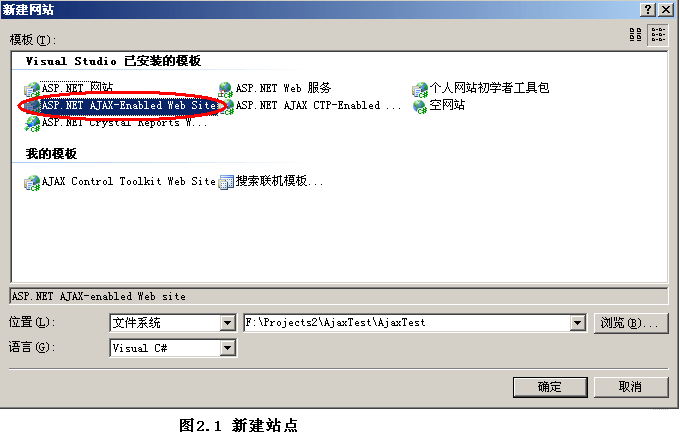asp.net的Close()与Dispose()用法介绍
-
asp.net的Close()与Dispose()用法介绍:
很多人都认为Close()方法内部会调用Dispose()方法,所以并没有本质的区别!实际上这个看法不是很准确,对有些类来说,的确Close()和Dispose()没有本质区别,但是对有些类来说并非如此!
首先,让我们看看我们最常使用的SqlConnection的Close()方法和Dispose()方法的区别:
SqlConnection类的Dispose()方法是继承于Component类的,源代码是这样的:
public void Dispose() {
Dispose(true); //调用Dispose的一个带参数的重载
GC.SuppressFinalize(this); //请求系统不要调用指定对象的终结器。
}
protected virtual void Dispose(bool disposing) {
if (disposing) {
lock(this) {
if (site != null && site.Container != null) {
site.Container.Remove(this);
}
if (events != null) {
EventHandler handler = (EventHandler)events[EventDisposed];
if (handler != null) handler(this, EventArgs.Empty);
}
}
}
}
SqlConnection类的Close()方法在MSDN中的说明是这样的:
关闭与数据库的连接。这是关闭任何打开连接的首选方法。 如果 SqlConnection 超出范围,则不会将其关闭。因此,必须通过调用 Close 或 Dispose 显式关闭该连接。Close 和 Dispose 在功能上等效。如果连接池值Pooling 设置为 true 或 yes,则基础连接将返回到连接池。另一方面,如果 Pooling 设置为 false 或 no,则会关闭到服务器的基础连接。
看说明好象是Close()方法和Dispose()方法是类似的,实际上只是在关闭连接这个功能上等效,让我们看看Close ()方法的源代码:
override public void Close() {
IntPtr hscp;
Bid.ScopeEnter(out hscp, "<sc.SqlConnection.Close|API> %d#" , ObjectID);
try {
SqlStatistics statistics = null;
RuntimeHelpers.PrepareConstrainedRegions();
try {
#if DEBUG
object initialReliabilitySlotValue = Thread.GetData(TdsParser.ReliabilitySlot);
RuntimeHelpers.PrepareConstrainedRegions();
try {
Thread.SetData(TdsParser.ReliabilitySlot, true);
#endif //DEBUG
statistics = SqlStatistics.StartTimer(Statistics);
// The lock here is to protect against the command.cancel / connection.close
race condition
// The SqlInternalConnectionTds is set to OpenBusy during close, once this
happens the cast below will fail and
// the command will no longer be cancelable. It might be desirable to be
able to cancel the close opperation, but this is
// outside of the scope of Whidbey RTM. See (SqlCommand::Cancel) for other
lock.
lock (InnerConnection) {
InnerConnection.CloseConnection(this, ConnectionFactory);
}
// does not require GC.KeepAlive(this) because of OnStateChange
if (null != Statistics) {
ADP.TimerCurrent(out _statistics._closeTimestamp);
}
#if DEBUG
}
finally {
Thread.SetData(TdsParser.ReliabilitySlot, initialReliabilitySlotValue);
}
#endif //DEBUG
}
catch (System.OutOfMemoryException e) {
Abort(e);
throw;
}
catch (System.StackOverflowException e) {
Abort(e);
throw;
}
catch (System.Threading.ThreadAbortException e) {
Abort(e);
throw;
}
finally {
SqlStatistics.StopTimer(statistics);
}
}
finally {
SqlDebugContext sdc = _sdc;
_sdc = null;
Bid.ScopeLeave(ref hscp);
if (sdc != null) {
sdc.Dispose();
}
}
}
可以看到Close()方法并没有调用Dispose()方法,虽然有一行sdc.Dispose();,但是这只是释放SqlDebugContext
实例,和SqlConnection.Dispose()方法没有关系!
那么区别在哪里呢?
Close()方法只是关闭了连接,然后这个连接被存储到连接池,所以在调用Close()方法以后,还是可以再通过 Open()方法来打开连接的而调用Dispose()方法以后,这个连接就不能在使用了!
还有一个重要区别就是,当Close()方法并没有调用GC.SuppressFinalize(this);,这导致的直接后果就是在垃圾回收的时候需要进行终止化操作,这会导致这个实例的“代龄”提升,从而极大的延迟这个对象的回收时间!
针对SqlConnection这个类来说,如果以后还需要使用这个连接可以使用Close()方法临时关闭连接,如果以后不需要使用这个连接了,可以优先选用Dispose()方法来释放资源,当然你可以使用using关键字来简化这个过程,
OleDbConnection类和OdbcConnection类的源代码我没有找到,但是应该和SqlConnection类是类似的!
让我们在看一个我们常用的类,看看FileStream类的Close()方法和Dispose()方法有什么区别:
FileStream类的Close()方法是继承于Stream类的,源代码是这样的:
public virtual void Close()
{
Dispose(true);
GC.SuppressFinalize(this);
}
FileStream类的Dispose()方法是继承于Stream类的,源代码是这样的:
public void Dispose()
{
Close();
}
是一个标准的Dispose模式的实现,Close()方法调用的是带参数的Dispose方法,然后调用GC.SuppressFinalize(this);请求系统不要调用指定对象的终结器。而Dispose()方法直接调用Close()方法!
对于FileStream类来说,Close()方法和Dispose()方法是没有区别!
相关视频
-
没有数据
相关阅读 ie6下面asp.net mvc3 部署应用程序在asp.net mvc中实现右键菜单和简单的分页教程ASP.NET中MVC框架模式方法如何实现分享ASP.NET 2.0 中保护机密数据ASP.NET配置文件Web.configASP.NET 2.0 AJAX中Webservice调用方法ASP.NET 的安全认证实现ASP.NET生成随机密码功能
- 文章评论
-
热门文章 没有查询到任何记录。
最新文章
 什么是.NET中的TDD?
什么是.NET中的TDD? ASP.NET AJAX入门简介
ASP.NET AJAX入门简介
WebMatrix入门教程VC++2008中如何调用GetOpenFileName打开文件PlaySound函数在VC++6.0中如何播放音乐及声请问VC++回调函数怎么用
人气排行 嵌入式实时操作系统VxWorks入门教程ArrayList 与 string、string[] 的转换C#遍历整个文件夹及子目录的文件代码WebMatrix入门教程asp.net判断文件或文件夹是否存在c#判断数据NULL值的方法vc++6.0怎么写Windows简单窗口代码.net解决数据导出excel时的格式问题
查看所有1条评论>>